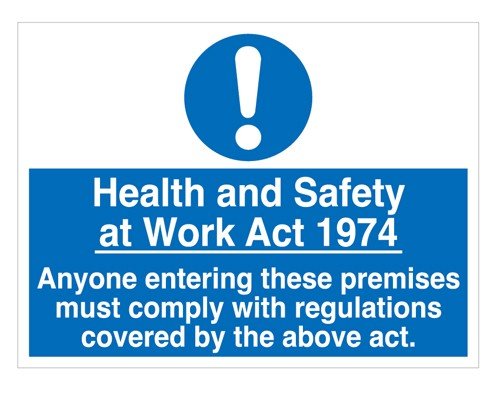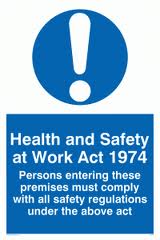Health and safety at work act 1974 care home
Home About us Licensing Contact us. Introduction Should Schools Adopt Restorative Justice? Advice for Schools Teaching about Ebola and its Impact on the World How classroom technology is changing education Teaching Oracy: Promote Interactive Learning The Power of Teacher Credibility What are the advantages of single sex schools?

Teaching Resources for Politics Lecturers The Growth Mindset How to teach about the formation of sinkholes How to teach about Auschwitz Discover the Secrets of Branding Using Mind Mapping Tools Innovative teaching methods vs the traditional uni What makes a good lecturer?
What is a natural disaster? Religious Studies Resources from BBC Active Google Tools for Educators Adopting the Flipped Classroom Model Science and Medicine Videos from BBC Active What are the Best Educational Apps? How social media is changing education MOOCs: Accessible education Inspiring Creativity in University Students Science Videos for Schools Business training tips from Entrepreneurs A University Degree vs.
Vocational Training Internet Search Skills Sugar v Fat: Horizon asks Which is Worse? Fierce Earth Why you should use a Virtual Learning Environment Health and Safety Training with BBC Video NLP in Education Top Universities in the World Videos for Teacher Training Encouraging Shy Students to Participate in Groups Mental Health Videos for Education Ten ways to make lectures more dynamic Videos Resources for Child Protection Training Health and safety law — control the risk Education videos: Ten ways to use them well Methods of Differentiation in the Classroom Using video in PowerPoint What is an interactive whiteboard?
BBC Educational video for the classroom iPads in the Classroom Using Pinterest for Education Back to the Floor — Business Training for Bosses Using Prezi In Education QR codes in education Bringing Engineering to Life with BBC Active Learning about War: Video to Teach WWII Racism — A history 10 Apps for Teaching History How to prepare a winning training presentation.
Health and safety law — control the risk and boost your business Protect yourself and your staff from illness or injury in the workplace. They will feel safer, more confident and valued. It makes good business sense to get equipped with the knowledge and skills to improve safety at work.
Health and safety legislation exists to protect the worker, and the business owner. Show you care and look after those who work for you. There are plenty of business benefits: The Act specifies the duties that employers have to their staff, to customers and members of the public whilst in the working environment. This health and safety law also states that employees have their own responsibility for keeping themselves and others safe, for example they must follow the guidance in the health and safety training they are provided.
Therefore if the measures required to protect staff and the general public are technically impossible, or the cost of the measures is grossly disproportionate to the risk, then the employer does not have to implement them.
Health and safety law requires management to use its common sense in looking what the risks are and identifying what could be done to tackle them. In the responsibilities of management were clarified in The Management of Health and Safety at Work Regulations the Management Regulations.
Dignity in care - Key legislation: Health and safety legislation
A risk assessment is the main requirement of employers, and those with 5 or more staff have to record the findings. The risk assessment required by law should be very straightforward in a typical office environment.
It does, however, become a more complicated affair where there are serious hazards present which threaten the health and safety of employers, such as those on an oil rig, a chemical plant or a nuclear power station.
Managing risks Health and safety law states that you must manage the risks in the workplace. Therefore, it is vital that you identify the elements which could harm either your staff or the general public. This type of risk assessment helps you to identify the risks so you can decide what you need to do to control them, and put the appropriate measures in place.
A rigorous risk assessment will help you to spot the possible health and safety hazards. These assessments should be carried out regularly in order to keep abreast of any changes. There are five stages to any risk assessment: It is also a good idea to review your accident and ill-health records as these can often indicate less obvious hazards.
If you have 5 or more employees you need to ensure that you record your risk assessments and the work you have done to improve safety.
However, even if you have fewer employees it is a good idea to keep a record. Health and safety templates can be downloaded from the Health and Safety executive website. Workplaces are not static environments. New equipment, substances and procedures are introduced on a regular basis and could mean a potential hazard. Finally, ensure that your staff has received the appropriate training. There are plenty of health and safety training videos available. Learning through video can be a highly engaging and effective method of training.
Common health and safety hazards Slips and trips: Slipping or tripping is one of the most frequent causes of injury in the work place, and probably one of the most avoidable. The most common reasons why these accidents occur are: Slips and trips can be easily avoided through good housekeeping cleaning spills immediately, clearing debris, covering cables etc… , having appropriate flooring recoating or replacing floors, installing mats, pressure-sensitive abrasive strips or abrasive-filled paint-on coating and through staff education.
Health 24/7
Faulty electrical equipment is the cause of many injuries each year, which are easily preventable. Health and safety law states that electrical equipment must be well-maintained in order to prevent danger. The type and frequency of these checks and the maintenance needed depends on the equipment and where it is used, as well as the results of previous checks.
It is important that you get someone who is suitably trained to carry out these checks and that you check with the Health and Safety Executive to find out how often checks are required. Keeping the noise down: According to the HSE approximately one million employees are exposed to noise levels that could damage their hearing each year.
Employers are legally required to make sure that they have assessed and identified measures to safeguard the hearing of their staff. Getting the word out: Make sure that your staff is aware of the rules and that they receive the appropriate health and safety training to reduce the risk of hazards occurring. It is a legal requirement that employees who are engaged in work that requires screen-based tasks are given periodical breaks and variations in activity.

Breaks must also allow users to vary their posture. Exercise routines, which include blinking, stretching and focusing eyes on distant objects can be helpful and could be covered in training programmes. For example, make sure that you have the correct number of staff trained in first aid and ensure that their training is up to date.
Copy of Unit 3: Health, Safety and Security in Health and Social Care. by jo haslam on Prezi
One of the commonest mistakes is not regularly replenishing the first aid box after use and it is a good idea to make sure that it is checked regularly and to replace those items as soon as possible. It is also a good idea to keep an up-to-date list of the health requirements of your employees so that you can provide the appropriate training to their colleagues in the event of ill health.
For example, staff working closely with an employee suffering from epilepsy could receive the appropriate training on how to deal with an attack.

To help keep their skills up to date, it is recommended that your staff trained in first-aid undertake annual refresher training. Health and safety does not have to be costly or time consuming. Small businesses often reap the benefits of implementing health and safety laws.
Most companies see a reduction in operating costs, for example lower insurance premiums. Reducing the number of sick days lost and better retention of staff can often occur when you put health and safety laws at the heart of your business.